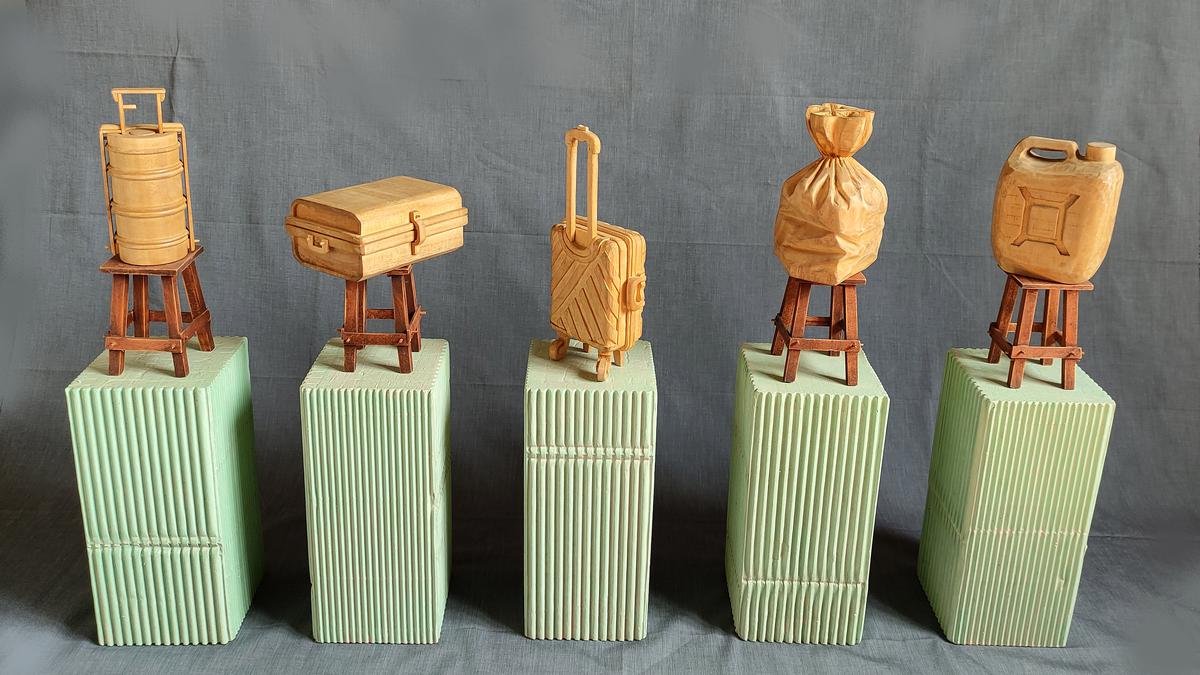
An art exhibition in Hyderabad explores the transience of time through sculptures
The Hindu
Sands of Time II, an exhibition at Kalakriti art gallery, Hyderabad, explores transience of time through 17 artists' works. Curated by Suroopa Chatterjee, featuring works of Avijit Dutta, Akup Buchem, Archisman Roy, Bamdeb Mondal, P J George Martin, Kantha Reddy, Rahul Modak and others.
Time, fluid and pausing for none, serves as an archive for political and social histories, containing within it both personal and collective experiences. Sands of Time II, the sculpture exhibition mooted by Hyderabad-based Kalakriti art gallery, has 17 artists exploring the transience of time. Curated by Suroopa Chatterjee, Sands of Time II has emerging artists and well known names presenting their interpretation of time.
This showcase is a follow-up to Kalakriti’s 2018 exhibition Sands of Time. Curating the second edition, Suroopa Chatterjee has been mindful of the fact that the world was forced to press the reset button owing to the pandemic. She encouraged artists to look at day-to-day happenings as well as reflect on larger socio-political events through their work.
Multi-disciplinary artist Avijit Dutta, whocurated the first edition of Sands of Time, observes that artists are now more open to experimenting with diverse mediums. He cites Chandrashekar Koteshwar’s sculptures that use terracotta, stoneware and iron as a case in point. In his statement, Koteshwar says he has moved away from his earlier idea of commentary on museum pieces. He used to create objects that resembled historical artefacts and make a satirical point about the importance assigned to them. His recent sculptures, a few of them on display at Kalakriti, have partial forms to draw attention to the idea of fragments as ruins. A sculpture titled Conscious Reader has a half human figure perched on a wood-terracotta pillar and reading.
Avijit’s artwork Deer harks back to the hunting trophies of yore and questions why man took pride in harming animals. He uses wood, epoxy resin and gold leaf, the last one covering the coveted horns. The glistening horns are Avijit’s way of highlighting the pride hunters took in displaying their trophies derived by cutting many lives short.
Artist Akup Buchem uses wood chips, steel nails, iron and fibreglass to create a large clipped wing of a bird. Another work resembles a disposal bag filled with industrial materials, the artwork resembling an installation rather than a sculpture.
Archisman Roy likes to elevate simple, everyday objects into works of art. His artwork titled They Are Resting at Their Destination features everyday items — from the humble tiffin carrier to items of luggage with wheels and water cans — perched on pistachio-green pillars. For the artist, these objects stand as reminders and response to everyday existence. In another work titled Packing, he fashions a small wooden cot on which lie objects such as clay pots, bamboo baskets and miniature gas cylinders.
Bamdeb Mondal, who learnt the traditional Dokra craft from the craftspeople of Gushkara village in East Burdwan, West Bengal, uses the Dokra technique to sculpt a ceremonial practice. His artwork titled Biya is a brass sculpture that replicates the headgear worn by brides in Bengal weddings.













